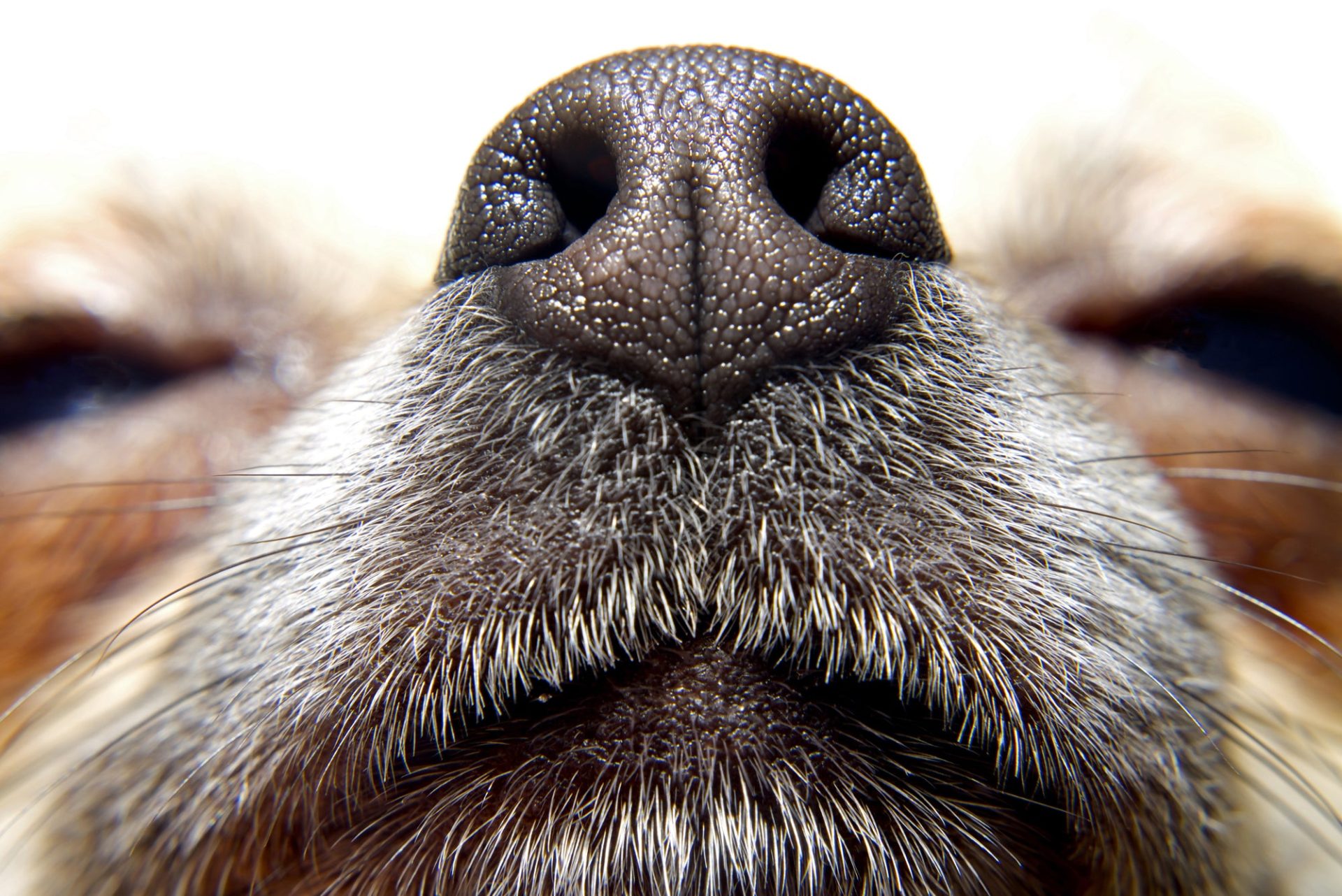We all know dogs have a good sense of smell—but do you know how good? Keep reading to find out how your dog’s nose works and why getting a good sniff of everything is so important for them.
How a Dog’s Nose Works
If you’ve ever tried to eat a sneaky late-night snack without your dog noticing, you’re probably well aware of how powerful a dog’s nose is. Comparing a dog’s sense of smell vs. a cat’s might be a fair competition, but if you compare a dog’s sense of smell vs. a human’s, there’s absolutely no contest! Here are some stats to break it down:
- Depending on the breed, dogs can have up to 300 million olfactory receptors in their noses to identify smells vs. a human’s 6 million.
- The proportion of the brain devoted to processing smells is 40 times larger in dogs than in humans.
- A dog’s sense of smell is between 10,000 and 100,000 times more powerful than a human’s.
To put that huge gap into perspective, James Walker, former director of the Sensory Research Institute at Florida State University said, “If you make the analogy to vision, what you and I can see at a third of a mile, a dog could see more than 3,000 miles away and still see as well.”
A dog’s nose has some unique features that help to boost its performance even further. On the outside, a dog’s nose is engineered to breathe in scents as efficiently as possible. A healthy dog’s wet nose helps scent particles to stick to their schnoz, explaining why dogs lick their noses to keep them nice and moist. Their nostrils can also move and operate independently, helping them to quickly figure out which way smells are coming from.
The shape of a dog’s nose is exceptional and unique—when they breathe out, the air actually leaves their nose through the slits on the side of either nostril and helps to direct fresh air back to the center of the nose to sniff. That airflow helps dogs to sniff almost continuously, as shown in a study done at the University of Oslo in Norway where they recorded a hunting dog sniffing a continuous stream of air for up to 40 seconds at a time in their search for scents.
On the inside, a dog’s nasal passages are more advanced than ours. While we use the same route for smell and breathing, a dog’s nose immediately divides the airflow into two separate trajectories: one for their respiratory system and one that heads straight to their olfactory receptors.
Dogs also have a second olfactory system that humans lack. A special organ known as the vomeronasal organ or Jacobson’s organ is located in their nasal cavity and opens into the roof of their mouth. This organ is specialized to detect and identify animal pheromones. Humans have vestigial vomeronasal organs during our embryonic development, but as adults, we are woefully left entirely unable to distinguish the owner of the mystery pee left on a fire hydrant by smell.
How Dogs Use Their Sense of Smell
So why do dogs have such a strong sense of smell? Our canine companions use this super sense in many ways. In the wild, dogs’ ancestors used scents to track and hunt prey and to keep tabs on both potential mates and strangers in their territory.
When it comes to domestic dogs, a dog’s sense of smell can be useful to man in many different jobs. Scent hound dog breeds target odors and track them across long distances, whether to chase game animals or to find lost humans in the wilderness. (Side note: a dog’s sense of smell at a distance helps your relationship with your dog too! Dogs can smell their owners from 11 miles away, making it easier for them to always return home to you.)
Regardless of breed, all dogs can detect a wide range of scents. Some dogs are trained to detect weapons and illegal substances, whether in an airport or a minefield. Medical detection dogs can use their powerful noses to sniff out a huge variety of health conditions in humans from cancer to coronavirus, making them literal lifesavers.
But how about your pet dog? They might not be making medical diagnoses, but their noses are an integral part of their daily lives.
Every walk is a chance to breathe in their surroundings, which is essential for their enrichment and mental health. A 2019 study published in the Applied Animal Behavior Science Journal shows that nosework helps to increase dogs’ optimism and overall well-being. So next time you take your pooch for a walk, take things slow and let them sniff every lamppost and doggy butt they can find—they might just have some extra spring in their step afterward.
Another added bonus is how their sense of smell contributes to their bond with you. Dogs memorize the smell of the humans they love and can recognize them by scent alone even if they haven’t seen each other in years. Those pheromone-detecting skills they use on other dogs also work on you, meaning that your dog can easily tell when you’re anxious by catching a whiff of the adrenaline hormone you release when stressed. (That’s how your dog always knows when you’re in extra need of a good cuddle.)
,

